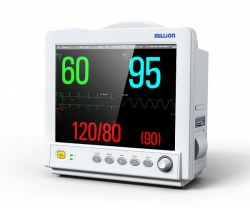Wechat QR code

TEL:400-654-1200

TEL:400-654-1200

Application of dynamic electrocardiogram in paroxysmal ventricular tachycardia
Most of them are found in organic heart disease, especially coronary heart disease, acute myocardial infarction and cardiomyopathy. A few are found in patients without obvious organic heart disease, drug poisoning and hypokalemia. Because ventricular tachycardia can lead to serious clinical consequences, outpatients should be treated with caution and should be admitted to hospital for treatment. Electroencephalograph Meilun
How to diagnose
(1) History and symptoms: Ventricular tachycardia often breaks out suddenly, the patient feels obvious panic and tightness, which can occur on the basis of premature ventricular beats. When the heart rate is over 200 beats/minute or there are obvious organic heart diseases, there may be angina pectoris, acute left heart failure, the occurrence of Ass syndrome, or even sudden death. Previous history of heart disease and ventricular tachycardia is helpful for diagnosis. Understanding the time and frequency of seizures, recent history of drug use, especially the use of antiarrhythmic drugs, cardiotonic agents and diuretics, can sometimes help to find out the causes of ventricular tachycardia. Electroencephalograph Meilun

Electroencephalograph
(2) Physical examination found that patients with short or persistent ventricular tachycardia without hemodynamic disorders generally had stable vital signs, fast and regular heart rate during auscultation, and could hear premature beats intermittently. Patients with basic heart disease or heart rate > 200 beats/min may be accompanied by hemodynamic disorders such as lower blood pressure, dyspnea, sweating, cold limbs and so on, indicating that the patient's condition is critical and needs urgent treatment.
(3) Auxiliary examination: The electrocardiogram can clearly diagnose and record the QRS wave of the wide deformity for more than three consecutive times. It has nothing to do with P wave. Sometimes, ventricular capture and ventricular fusion wave can be seen. 24-hour ambulatory electrocardiogram is helpful for diagnosis of infrequent or short-term seizures. Cardiac ultrasound can identify the underlying heart diseases.
(4) Differential diagnosis: It should be differentiated from supraventricular tachycardia (SVT) with bypass anterograde or bundle branch block of preexcitation syndrome.